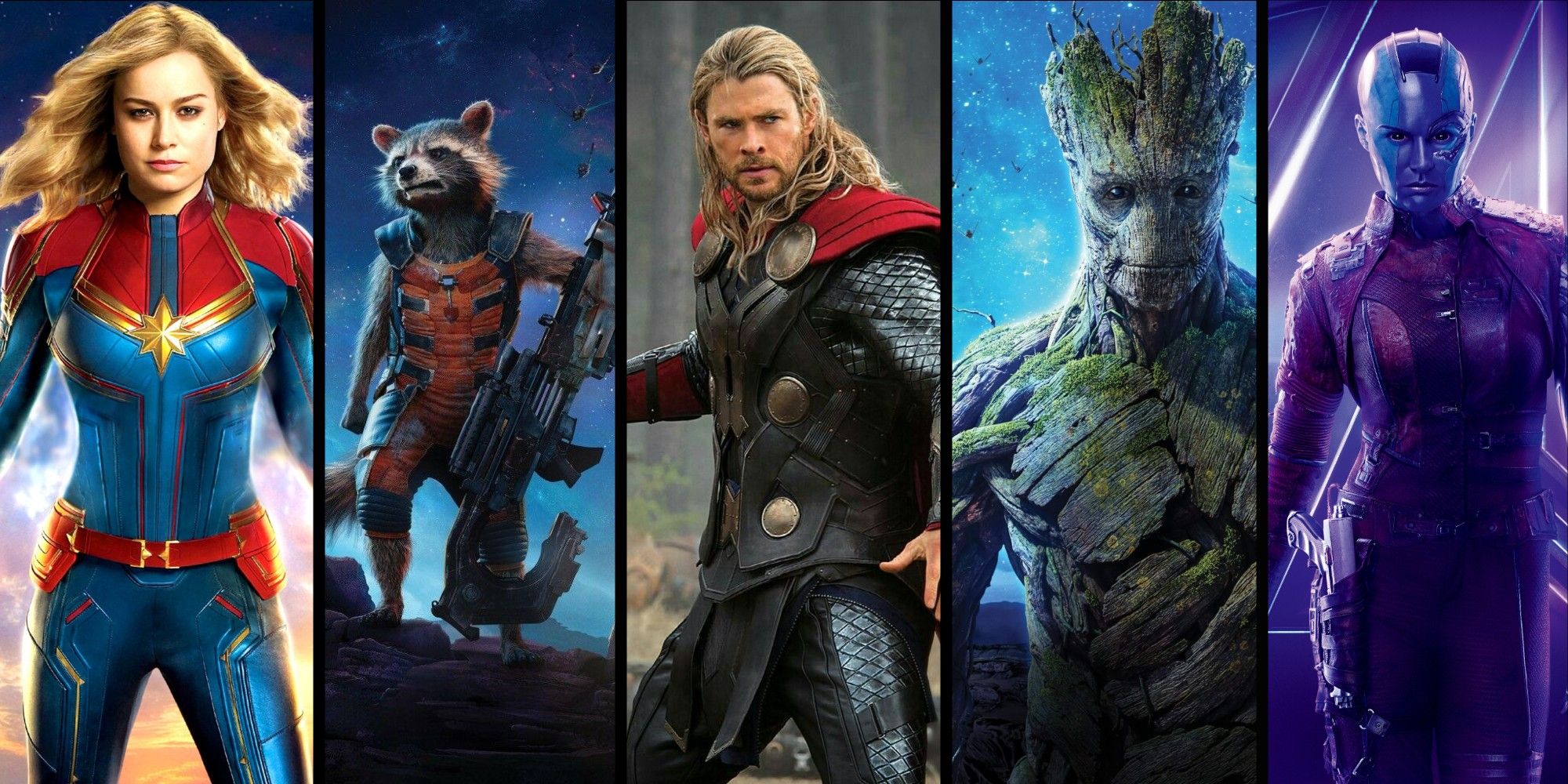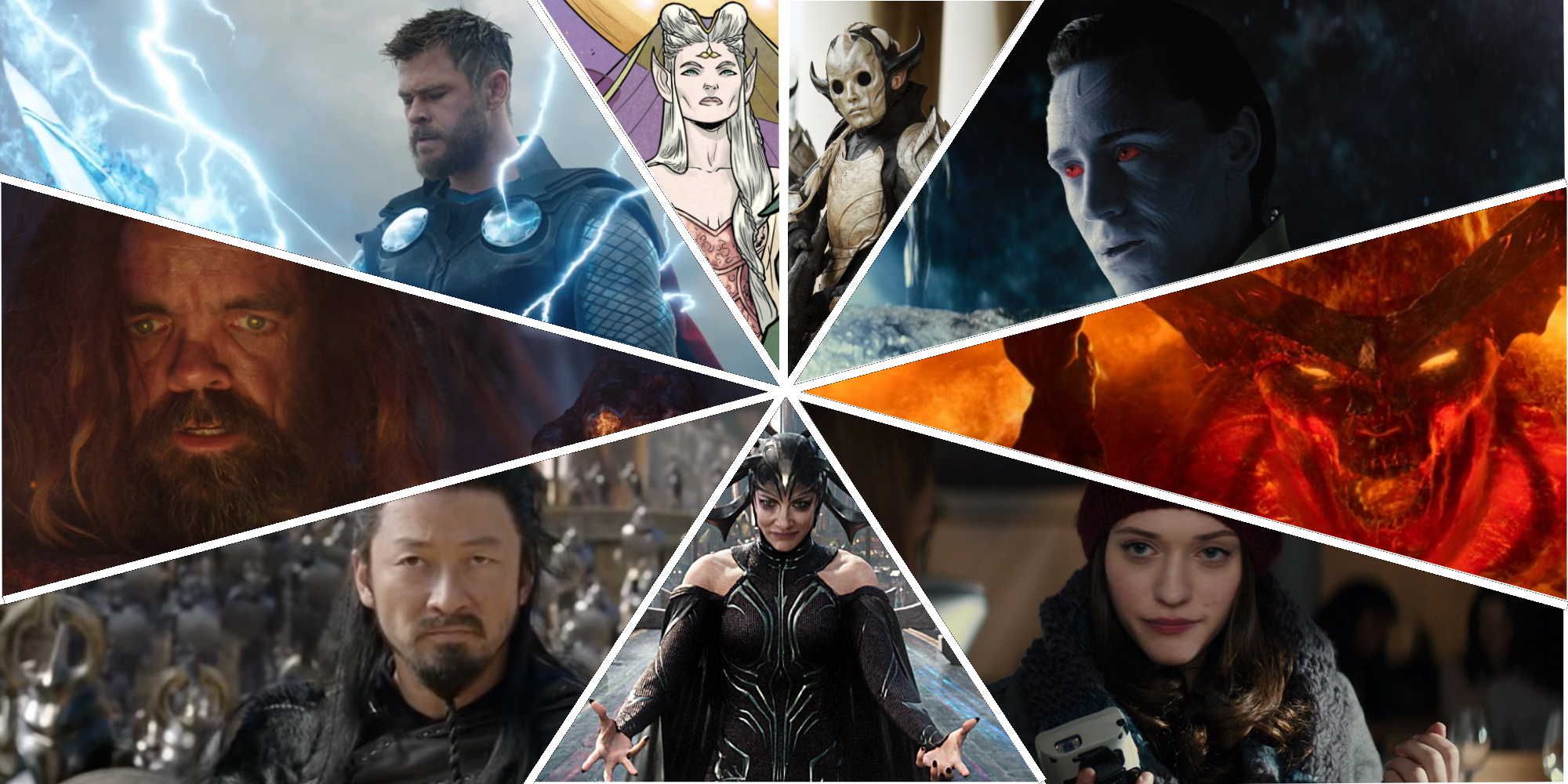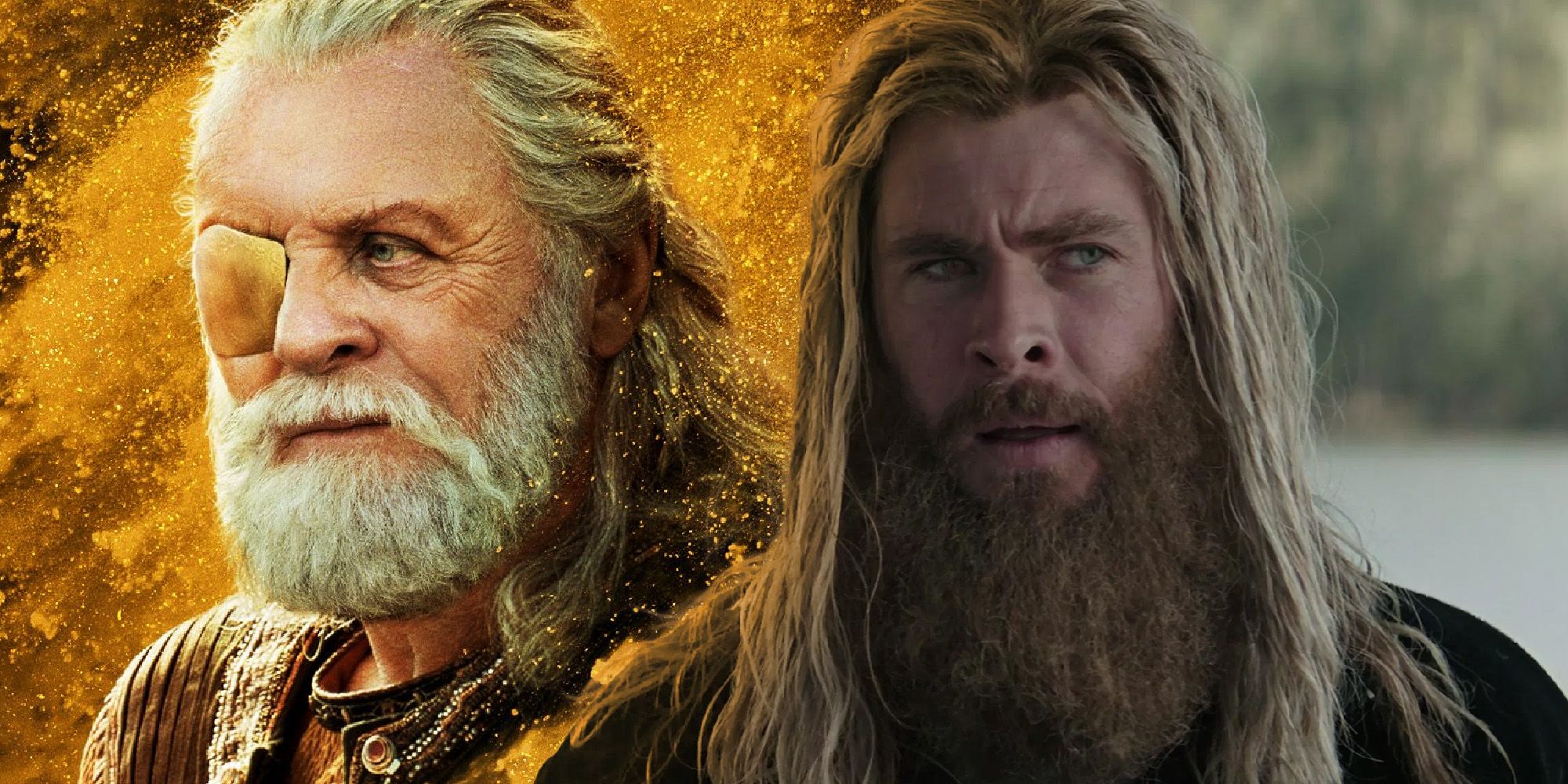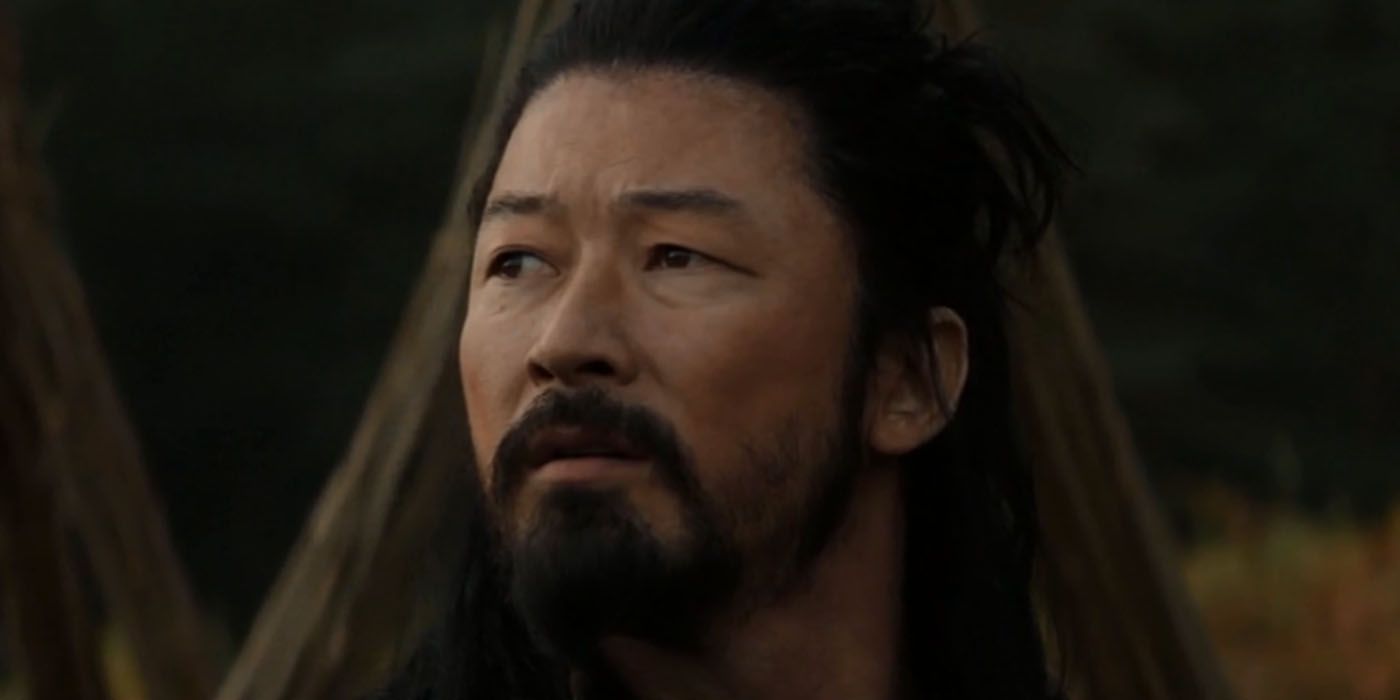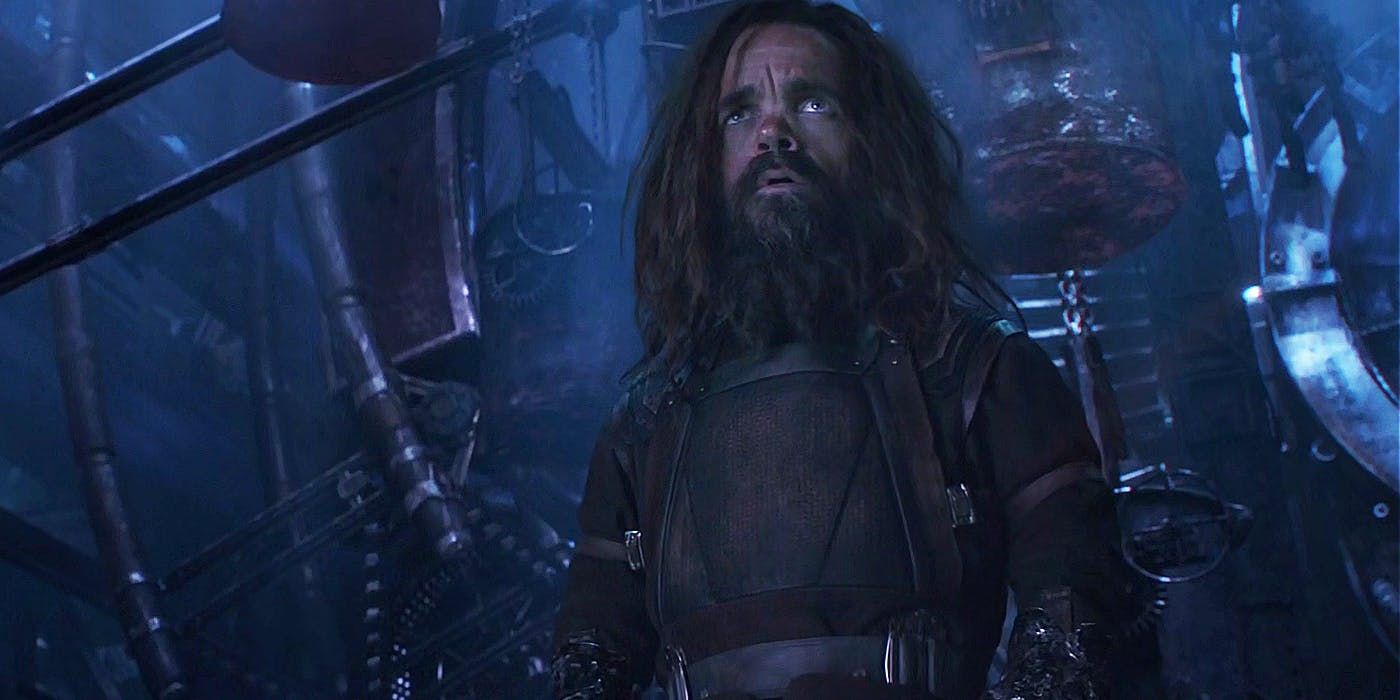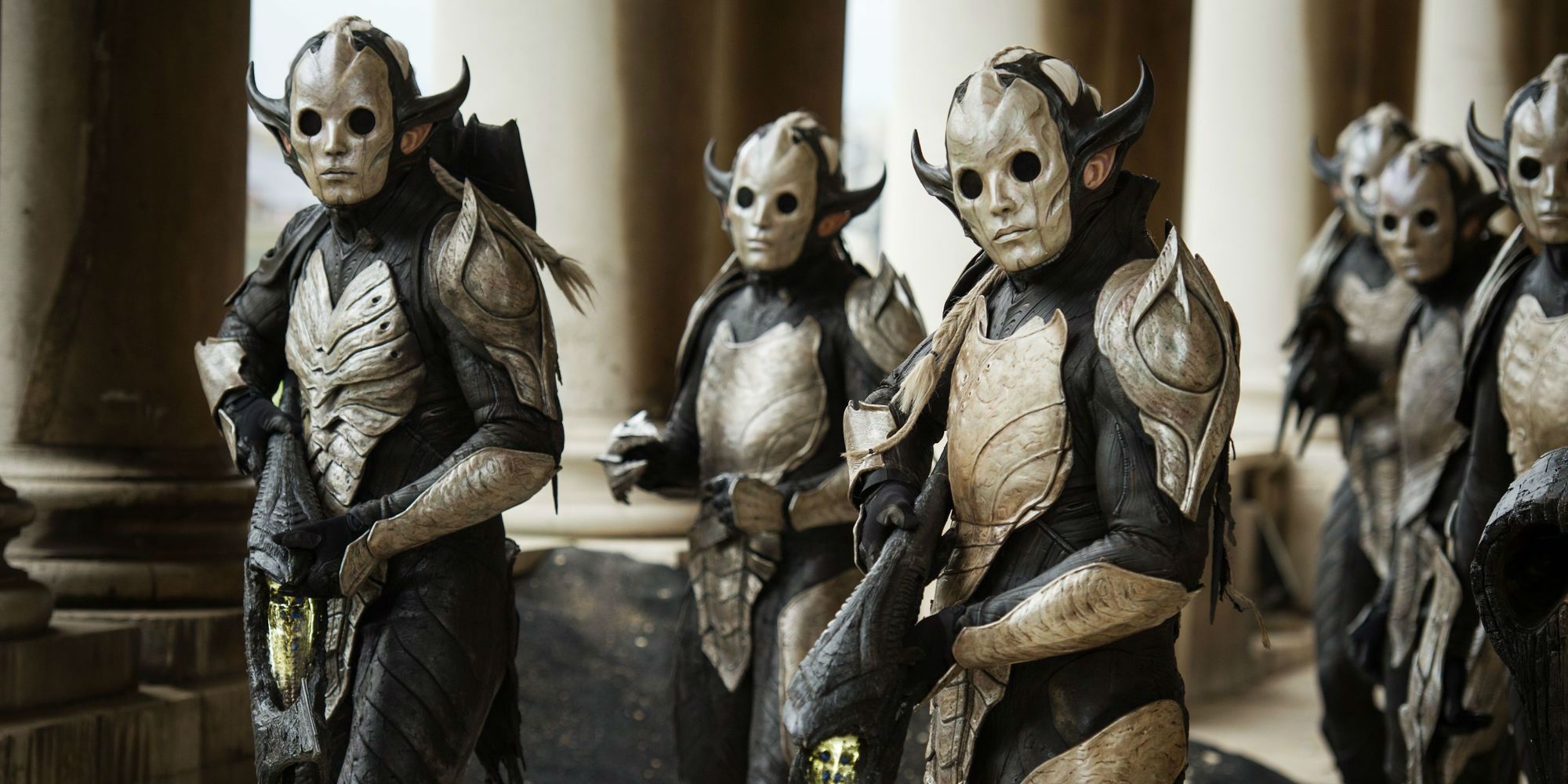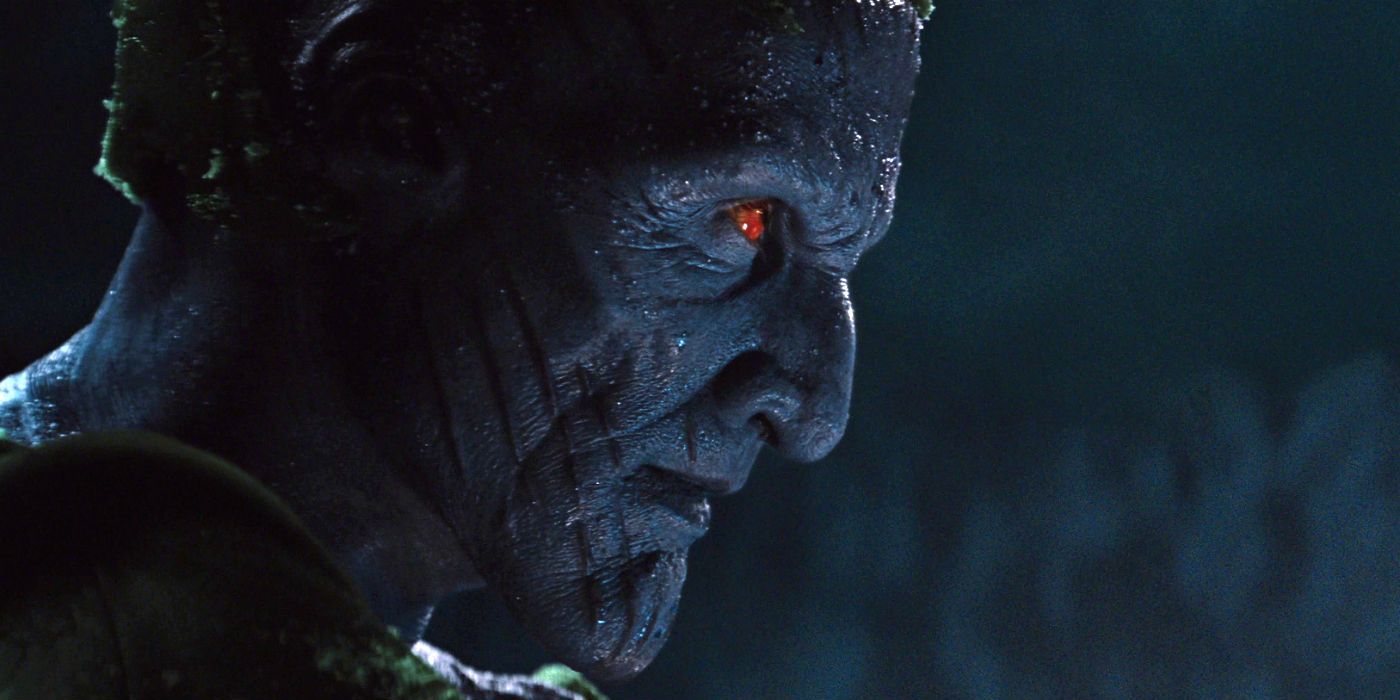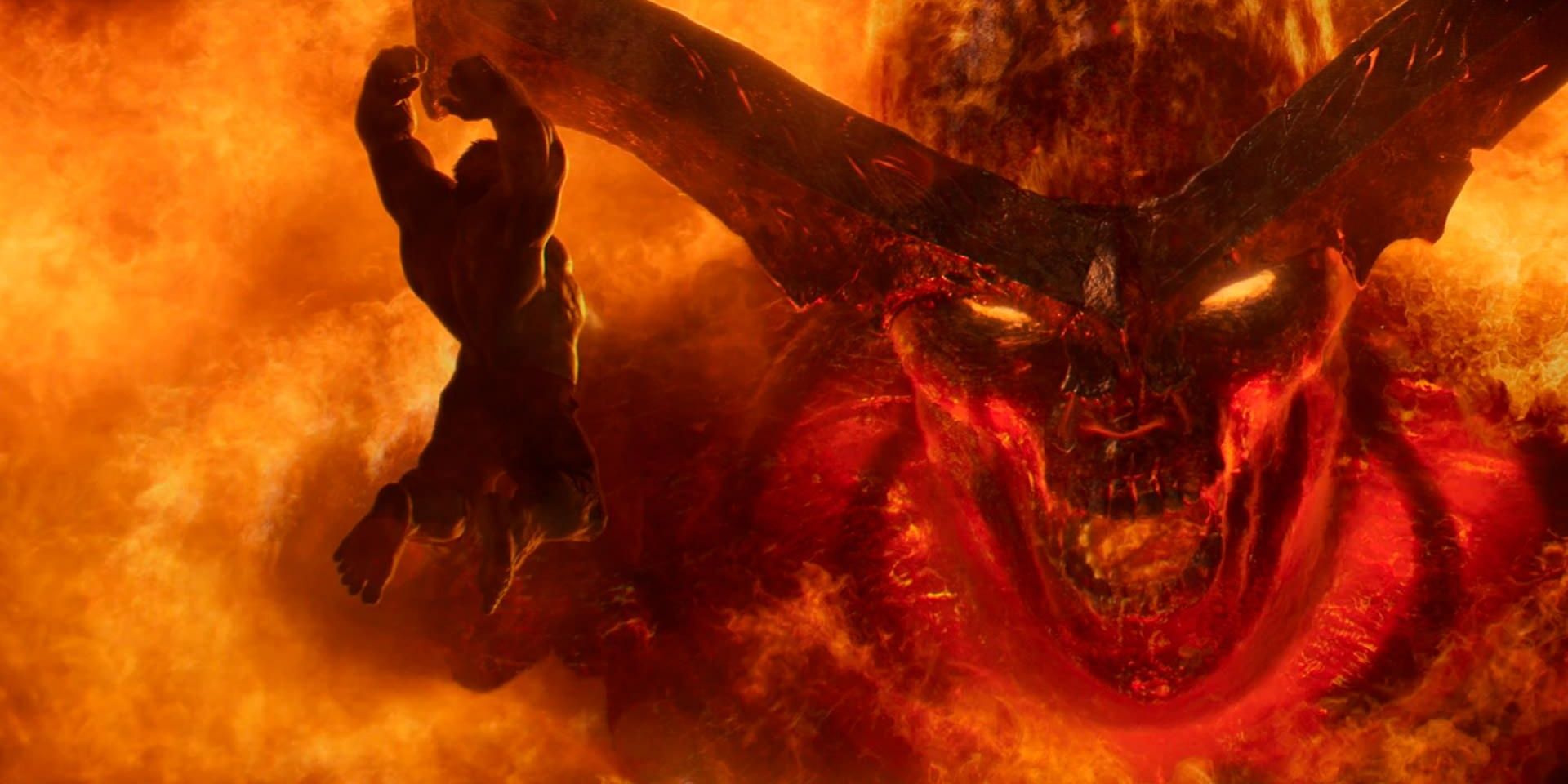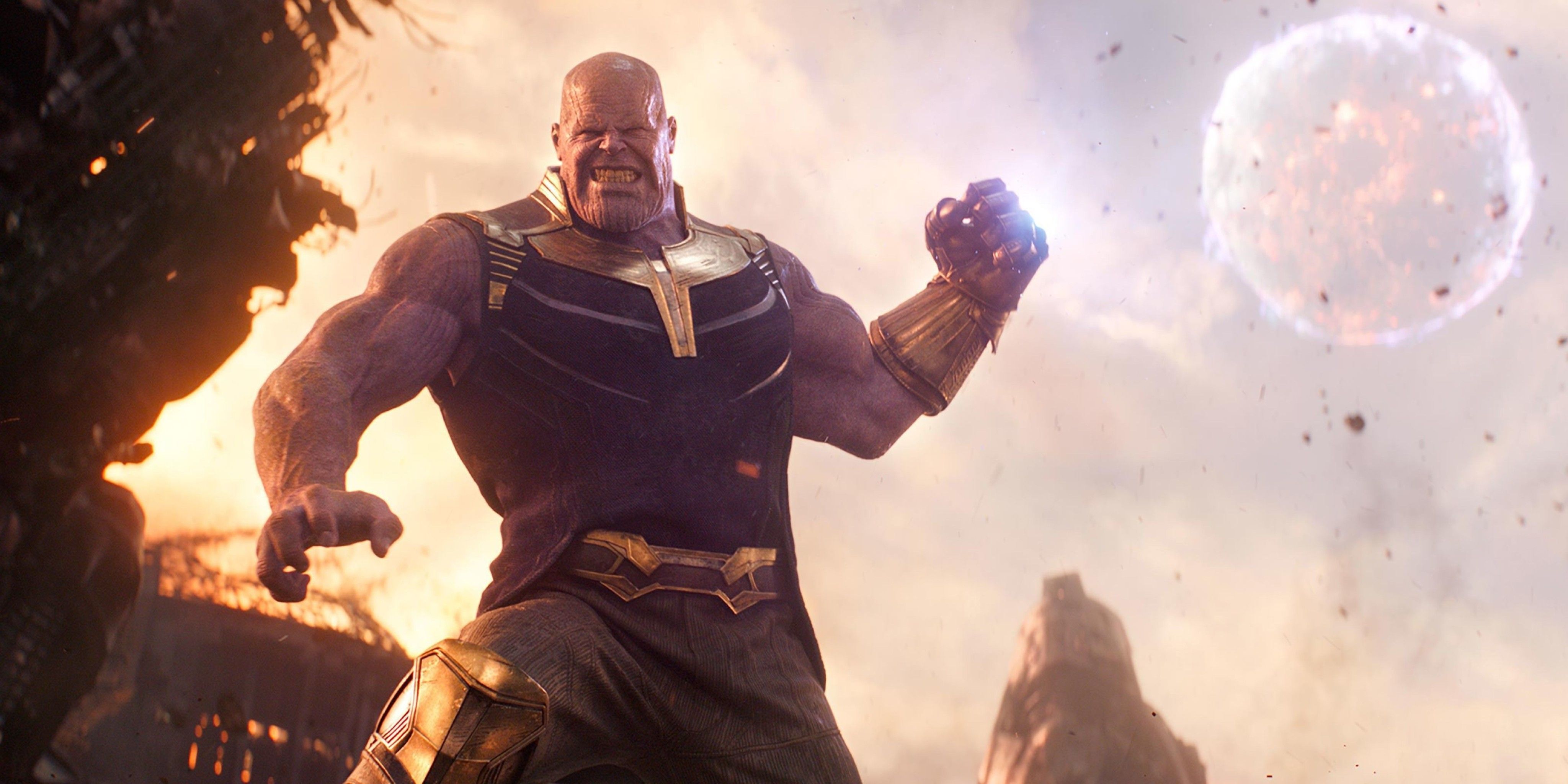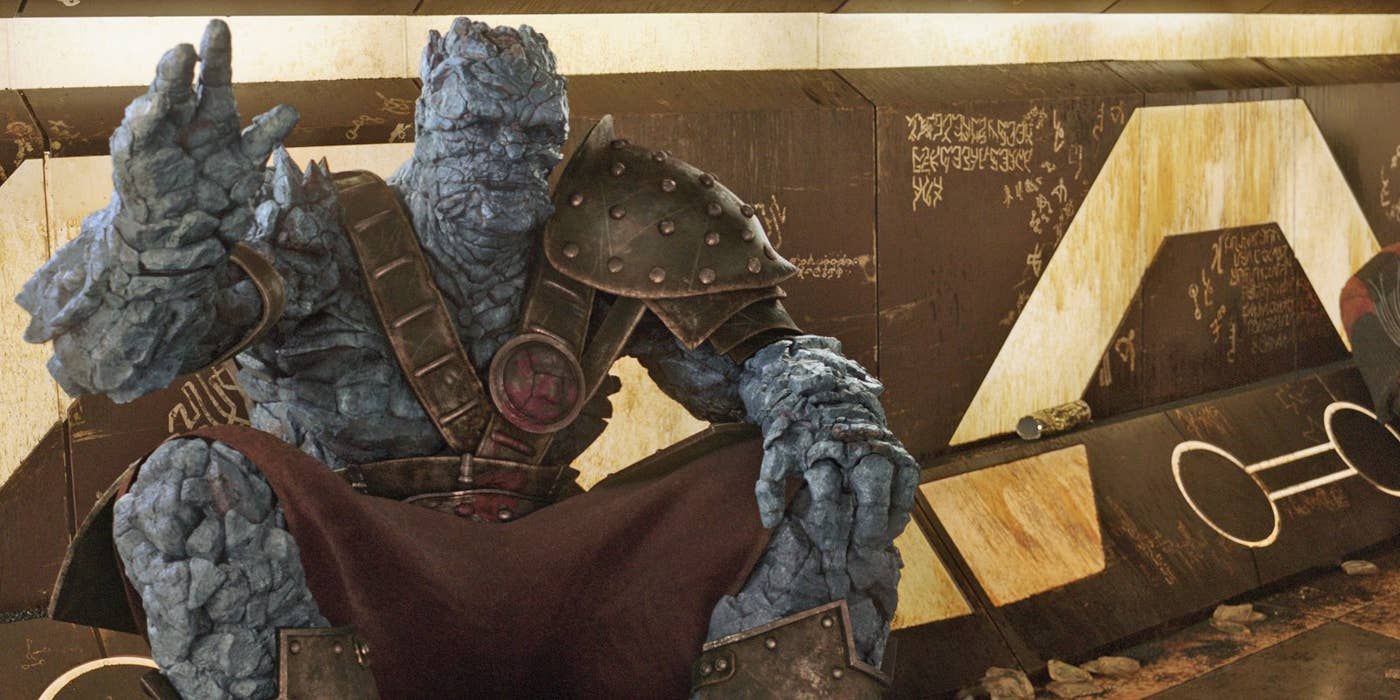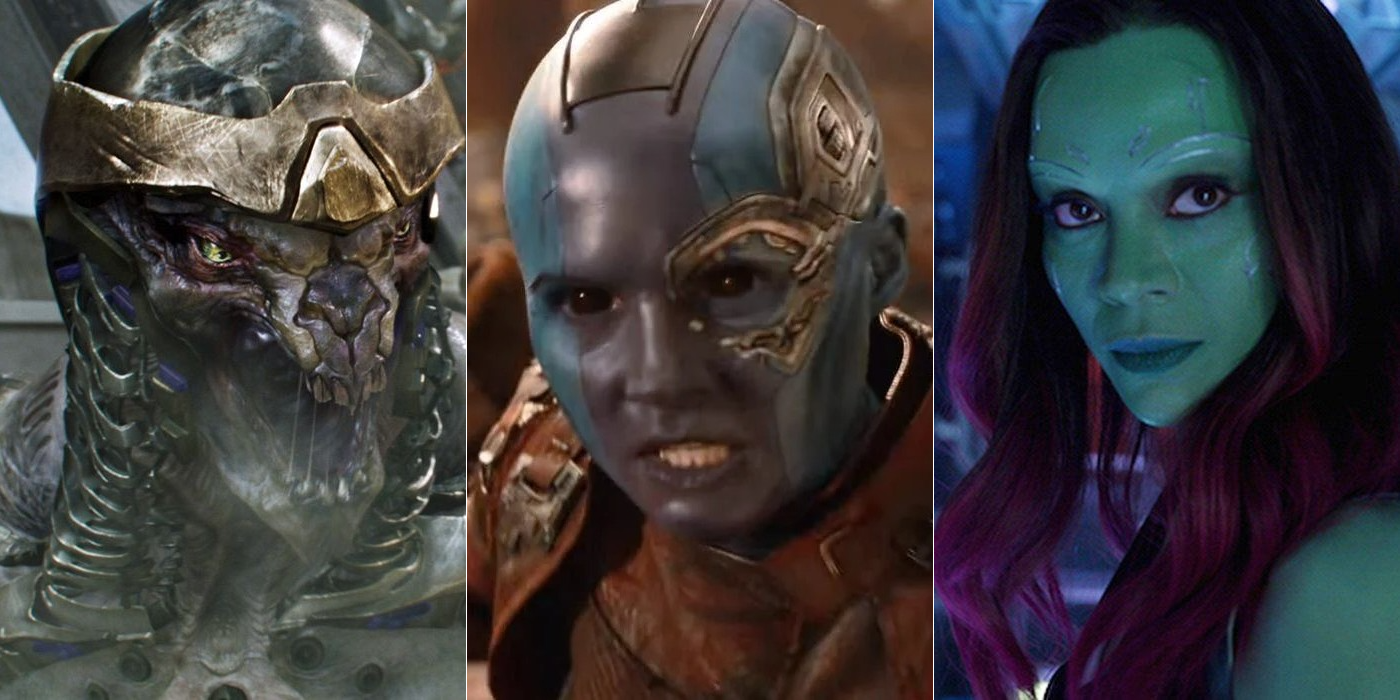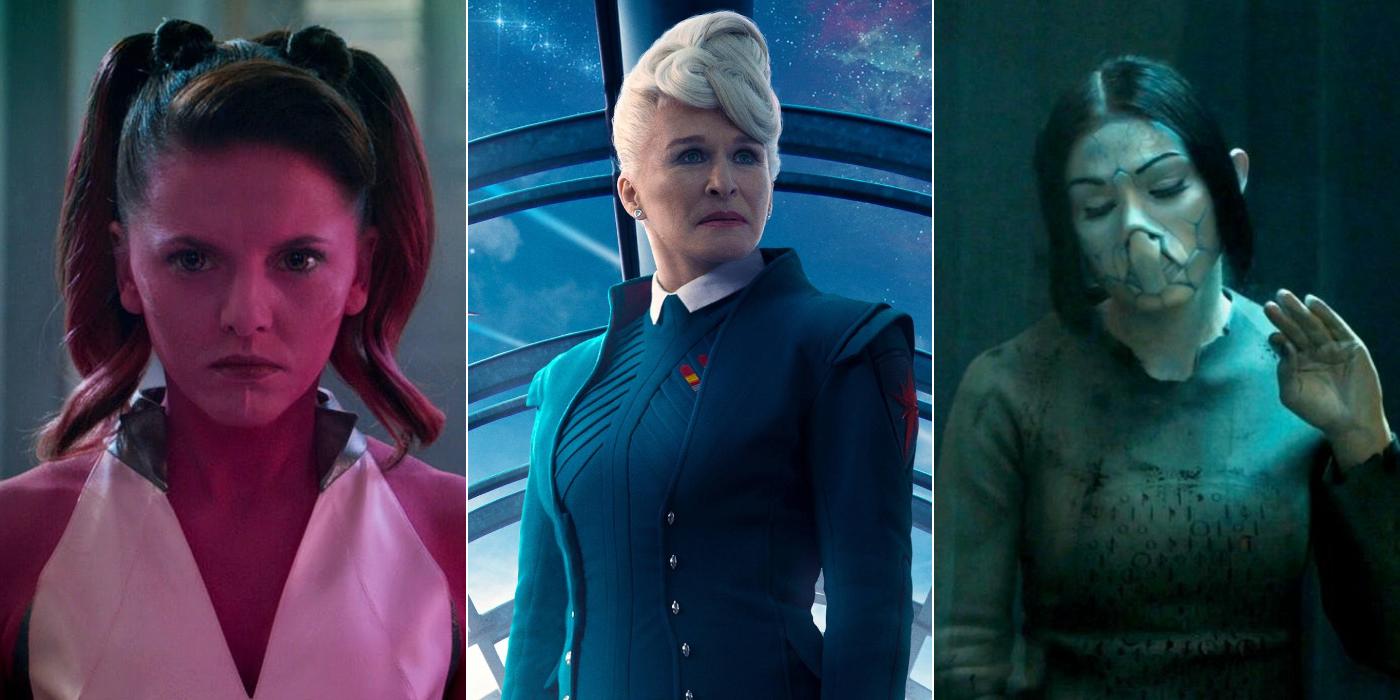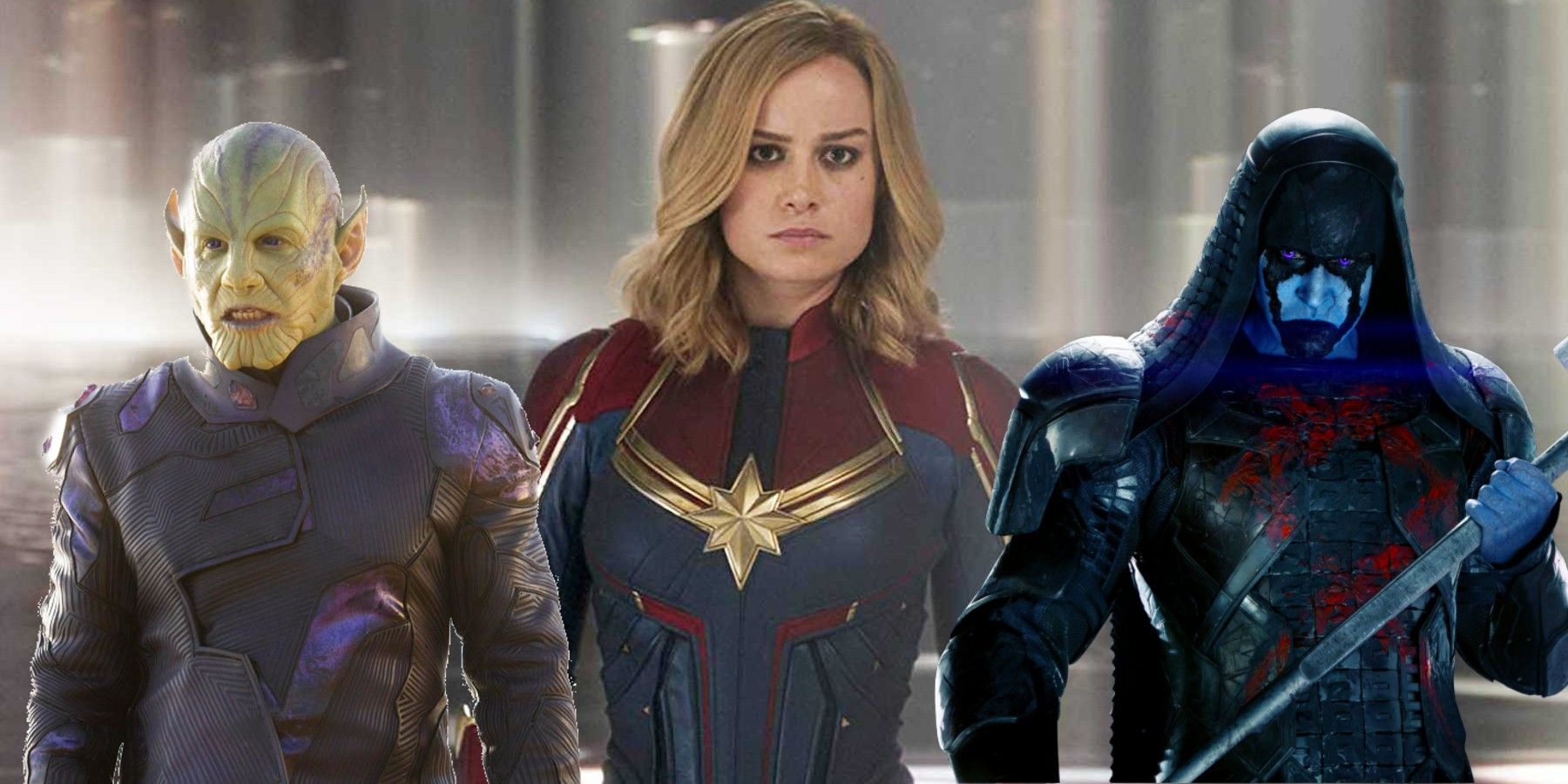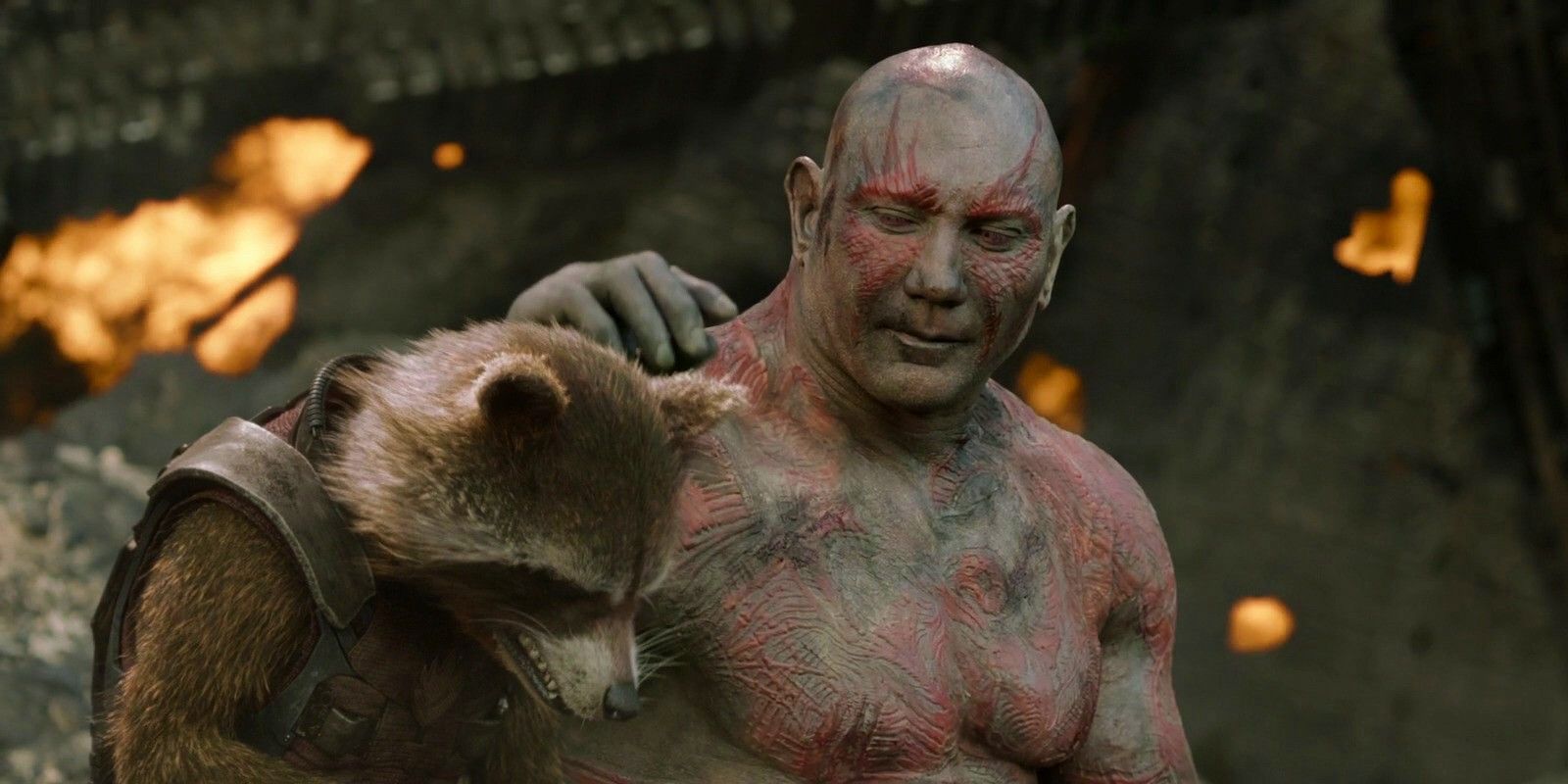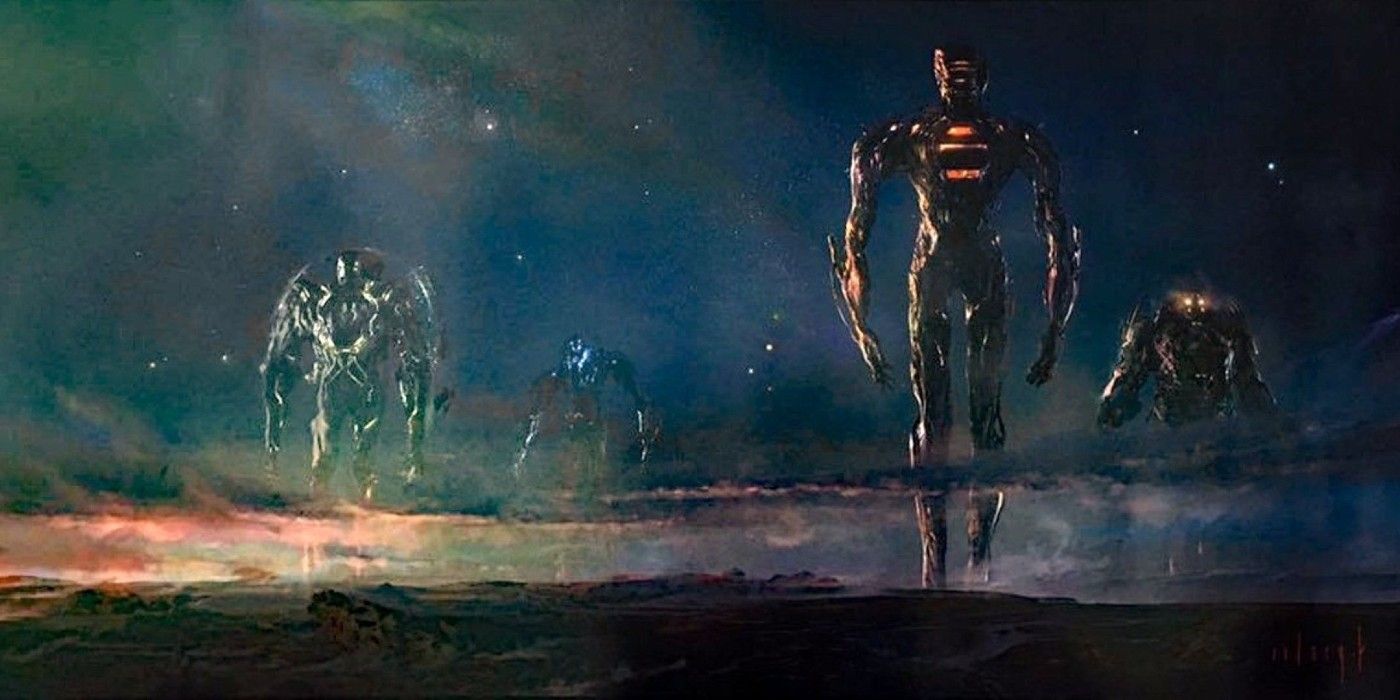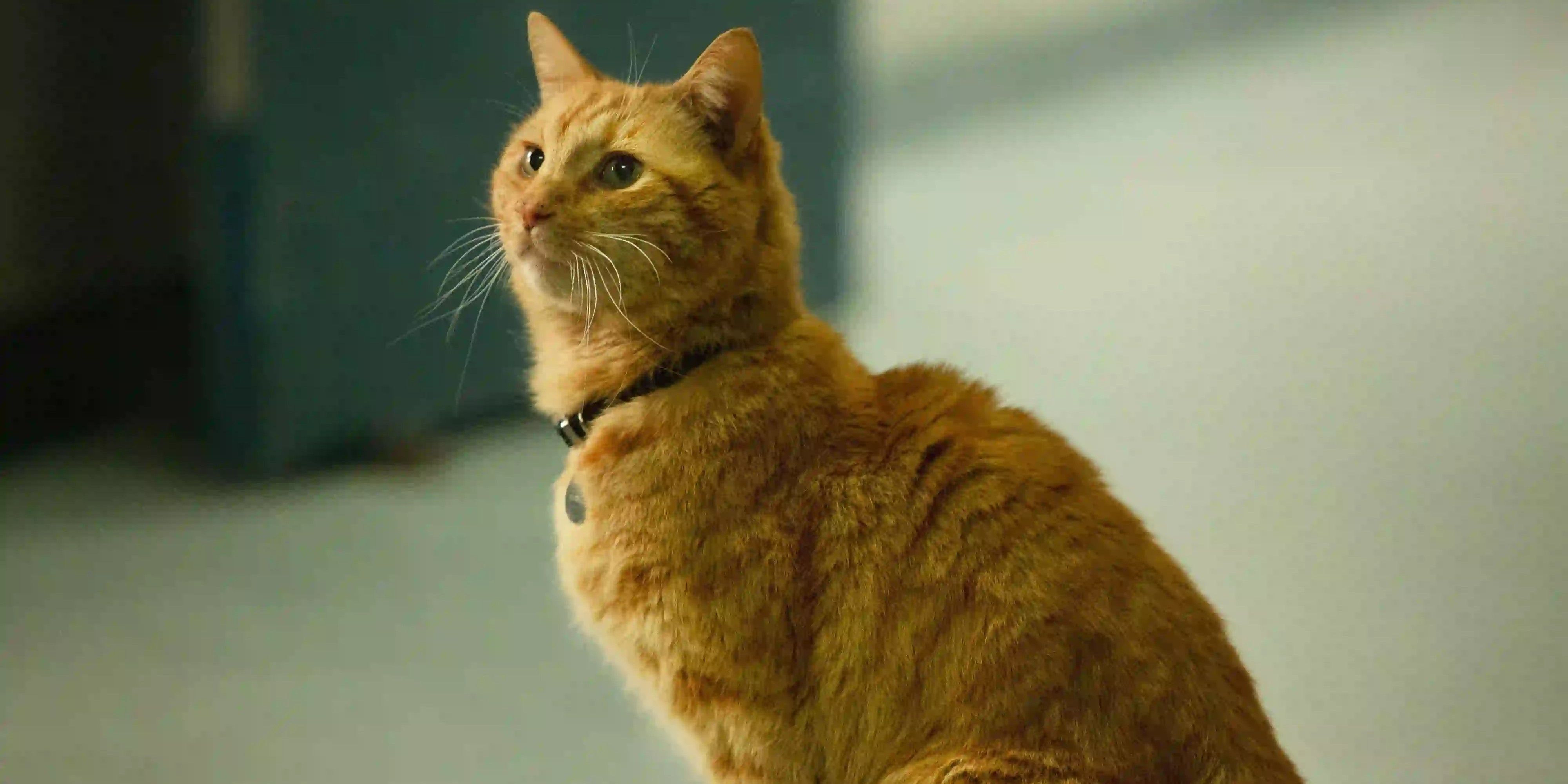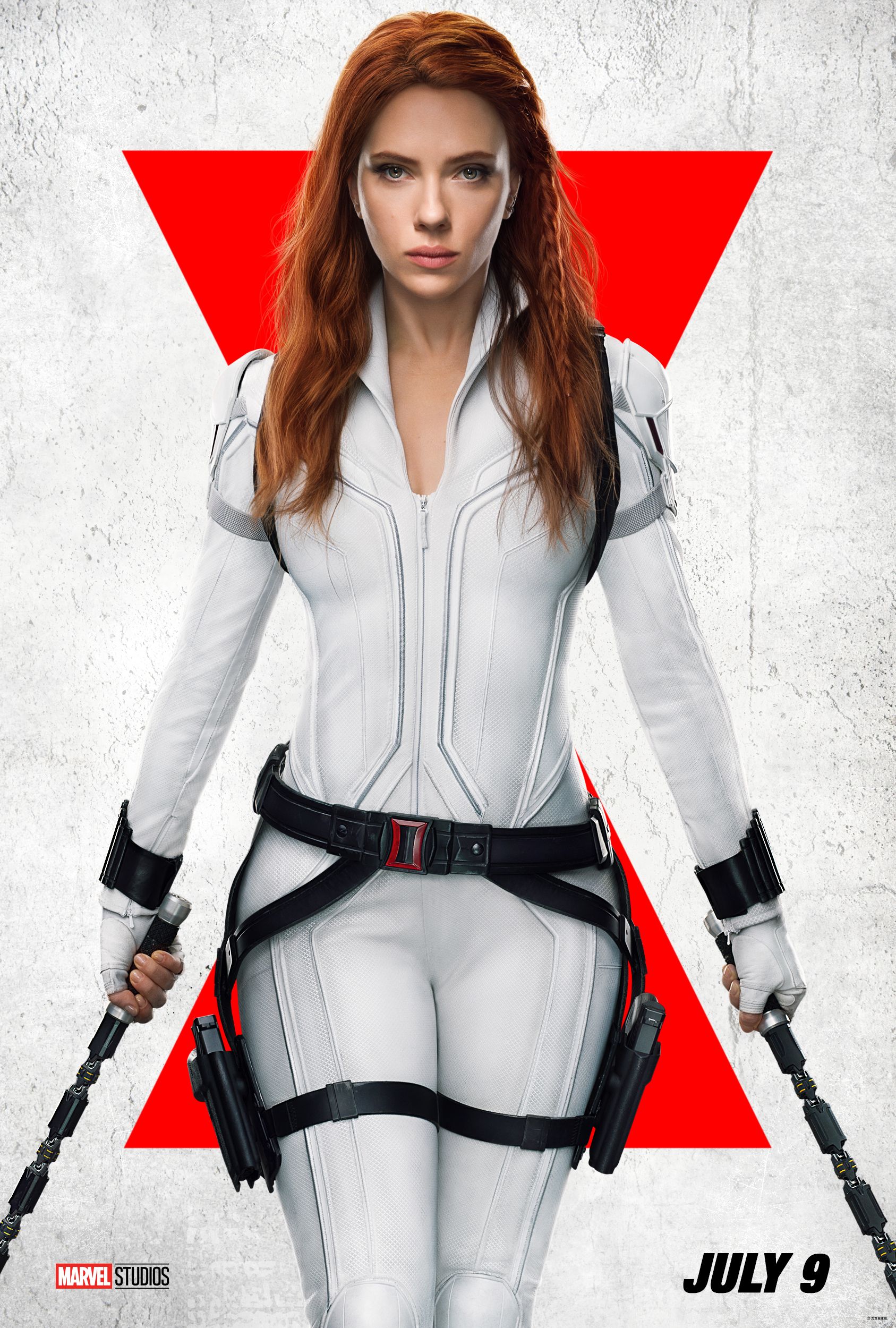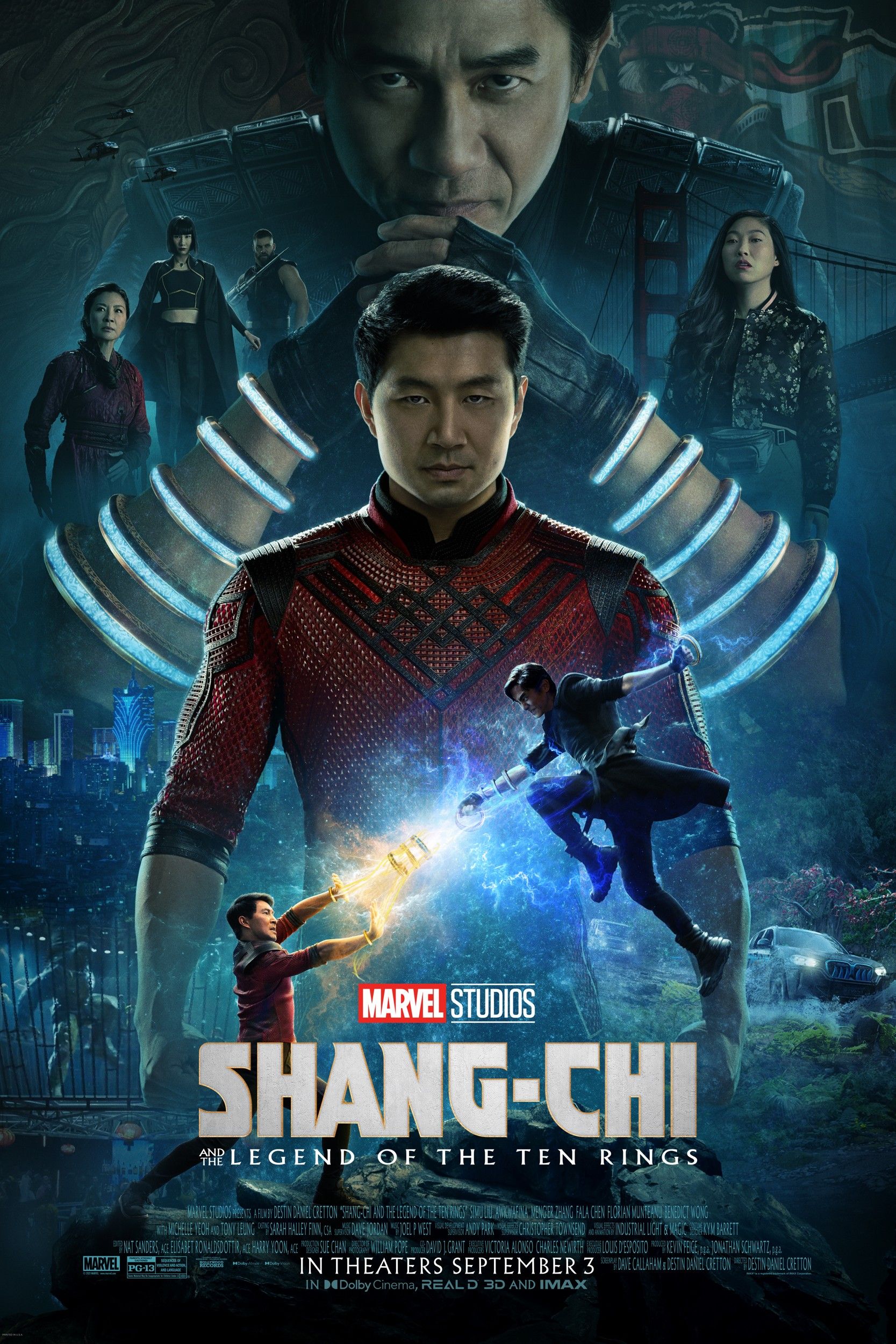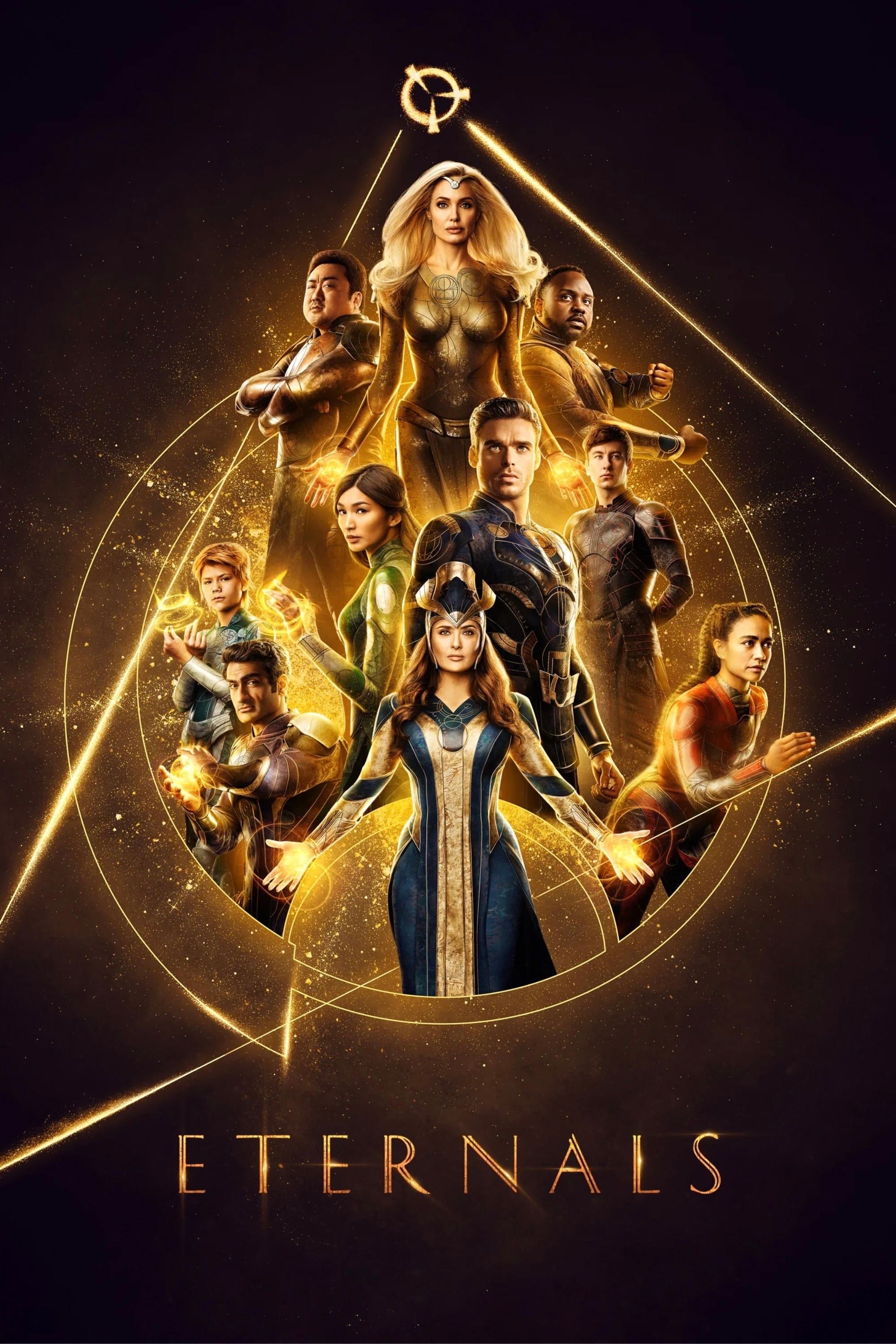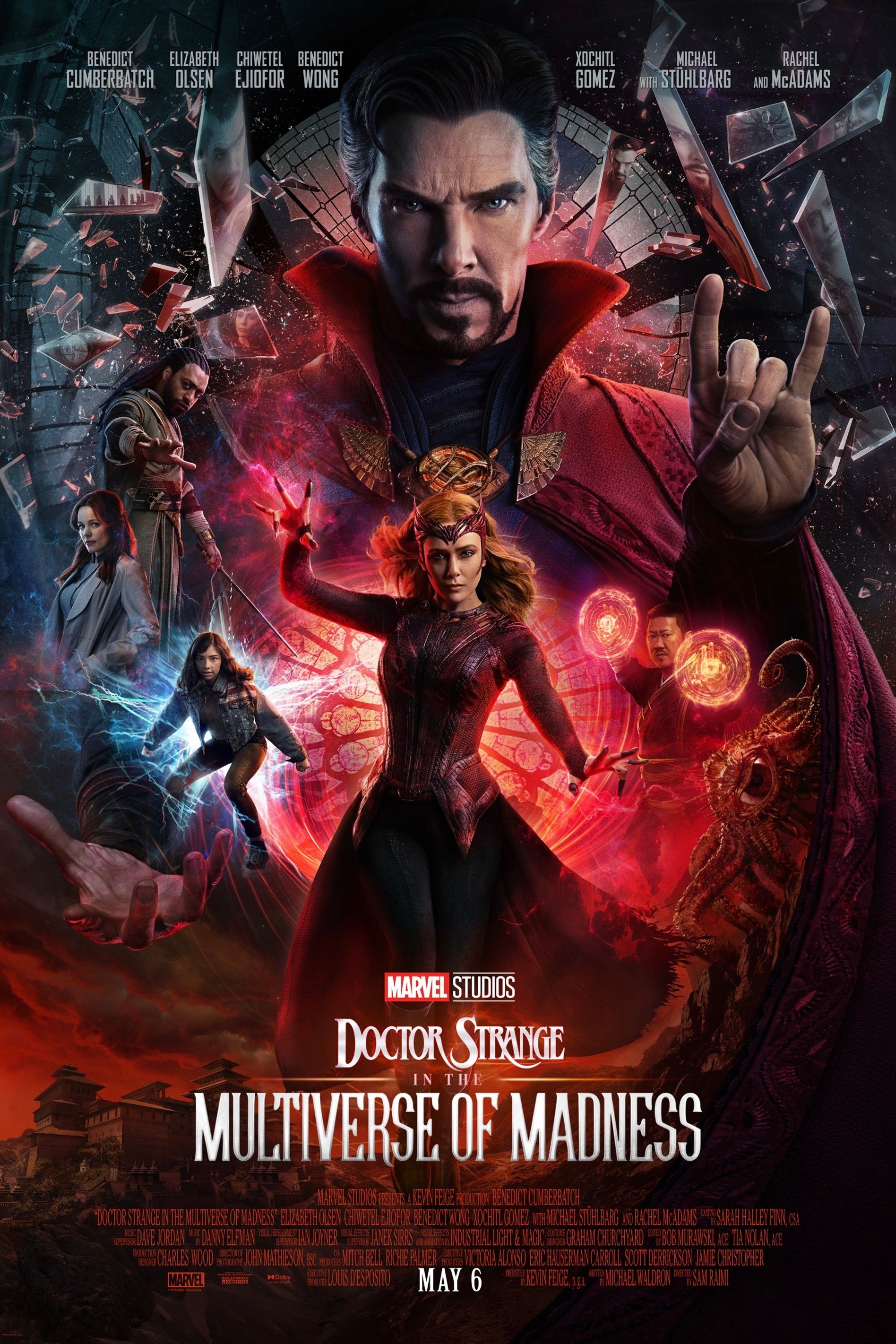Like all great intergalactic sagas, the Marvel movies explore a vast galaxy full of different planets and alien species. Although the Marvel Cinematic Universe began with a focus on human superheroes, it quickly expanded to encompass many different forms of alien life. After establishing the origin stories of the Avengers in Phase 1, Phase 2 of the MCU expanded Thor's story, giving audiences a glimpse of his relationship to other alien races. Phase 2 also introduced Guardians of the Galaxy, which established a galaxy beyond the Nine Realms and gave producers infinite possibilities when it came to incorporating alien characters.
In the MCU timeline, aliens first arrived on 21st century Earth when Thor, an Asgardian, crash-landed in New Mexico, alerting authorities to the existence of extraterrestrial life. Thor's cooperation with the Avengers quickly expanded humanity's vision of the universe as he taught them about the different worlds and governments. Earth's wider population first became aware of alien life when the Chitauri invaded New York City in The Avengers. Following that attack, the Avengers faced other alien threats, eventually getting sucked into an intergalactic war against Thanos in Avengers: Endgame and Avengers: Infinity War.
One important fact to note is that among the multitude of alien races in the universe, there are several political and military organizations. Although many of the MCU's notable alien characters are members of these organizations, their races, and home planets are never explicitly identified. Ebony Maw, of the Black Order, for example, is a powerful telekinetic who battles the Avengers, but his species is never named in the Cinematic Universe. With Phase Four set to explore even more of the universe, here is a catalog of every alien species seen in the MCU so far.
The Nine Realms
In Marvel lore, the Nine Realms make up a huge part of intergalactic civilization. With a multiverse full of superheroes and aliens, the eight planets orbiting Midgard (a.k.a. Earth) are the most relevant to humanity's continued existence. All nine realms are connected by the Bifrost, a rainbow bridge that allows instant travel between worlds. Each world, inhabited by different species, has its own conflicts and alliances with others, creating a complex web of intergalactic politics.
Asgardians
Chief among the Nine Realms is Asgard, home to Thor and Odin. Although Norse mythology on Earth was influenced by the early presence of Asgardians in Scandinavia, the well-known "gods" are actually aliens native to Asgard. Asgardians resemble humans but have superior strength, speed, endurance, and (allegedly) wisdom. They are also much longer-lived than humans, with lives spanning hundreds of years. The culture on Asgard prizes physical strength and bravery in battle, resulting in a community of warriors. Among Asgardians, there is a group of elite female warriors called the Valkyries, who are not a separate species but do undergo special training. Most were wiped out in a battle against Hela, an Asgardian who laid claim to Odin's throne. The sole survivor, Brunnhilde, is seen in Thor: Ragnarok.
There are a couple of known subspecies native to Asgard. During The Avengers, Thor mentions a race of creatures called the Bilgesnipe, which he describes as, "huge, scaly, big antlers." According to Thor, they're "repulsive," trampling everything in their path. Also native to Asgard are the steeds of the Valkyries, which resemble horses with wings. One such pegasus appears in Avengers: Infinity War. A similarly powerful mount, the Asgardian wolf Fenris who was resurrected by Hela, appears in Thor: Ragnarok.
Vanir
Allies of the Asgardians include the Vanir, native to Vanaheim, of whom Hogun is a member. Like Asgardians, Hogun is long-lived and much stronger than an average human. He first appeared in Thor as a member of the Warriors Three, a group of brothers-in-arms that also includes Asgardians Fandral and Volstagg.
Dwarves of Nidavellir
Dwarves, also allies of Asgard, didn't appear onscreen in the Marvel Cinematic Universe until Avengers: Infinity War. During the film, Thor sought help in creating a weapon capable of defeating Thanos. In traveling to the home planet of the dwarves, Thor found Eitri (Peter Dinklage), the King of Nidavellir and last survivor of his race. Like all dwarves, Eitri is a skilled forger and blacksmith. His planet is home to a forge powered by the heart of a dying star, the only one in the galaxy capable of creating weapons made from the metal Uru. Eitri and his people are responsible for creating Thor's hammer, Mjolnir, and the Infinity Gauntlet, capable of harnessing the power of the Infinity Stones. With Thor's assistance, Eitri also created Stormbreaker, an axe destined to be the greatest weapon in Asgard's history.
Light & Dark Elves
The world next nearest to Asgard is Alfheim, home to the Light Elves, who have not yet made an appearance in the Marvel Cinematic Universe. In the comics, the light elves are a generally peaceful race, although, like Asgardians, they have superhuman strength, speed, and agility. Per the lore, they have a talent for archery and weakness to iron.
Opposite the Light Elves are a race of beings who are have been fighting Asgardians for millennia. The Dark Elves, who hail from Svartalfheim, were born out of the darkness of the universe, according to Odin in Thor: The Dark World. About 5,000 years before the events of The Avengers, the Dark Elves, led by Malekith, fought the Asgardians in an effort to bring eternal darkness to the universe. The Dark Elves later reawakened to continue that mission, attempting to use the Aether (later used to make the Reality Stone) to remake the Nine Realms. Thor and Loki ultimately defeated the elves and they were all but wiped out.
Like many of the races of the Nine Realms, the Dark Elves are more advanced than humans when it comes to strength and speed. In Thor: The Dark World, the Dark Elves are a match for the Asgardians, mounting a successful attack against their home world. The Dark Elves also have a quasi-subspecies of elite warriors called the Kursed, who become almost invulnerable with the use of mystical Kurse Stones, but are doomed to be eventually consumed by darkness. Algrim the Strong, who died in battle against Loki and Thor, was one of the Kursed, and is shown knocking aside Thor's hammer before being sucked into a black hole.
Frost Giants
Another formidable enemy of Asgard is the Frost Giants, who originate from Jotunheim. Frost Giants are generally much larger and taller than humans and can manipulate and control ice, using it to form weapons and armor. Members of the species have blue skin and bright red eyes, along with facial ridges and other unique bone structures. The most notable Frost Giant in the MCU is undoubtedly Loki, whose true heritage as the biological son of Laufey (King of Jotunheim) was revealed in Thor. During the film, Asgardians also face off against Frost Beasts, another species native to Jotunheim.
Fire Demons
The final two realms in the system, Niflheim and Muspelheim, are each seen in Thor: Ragnarok. The latter is home to the fire demons and their leader Surtur, who was destined to destroy Asgard. Thor is seen visiting Muspelheim in Thor: Ragnarok, where he battles Surtur, an army of fire demons and a fire dragon, eventually escaping via the Bifrost. As one might expect, Surtur and his cohort have power over fire, using it to attack enemies. Although Thor defeats Surtur in the first few minutes of Thor: Ragnarok, he later frees him in an effort to destroy Hela. The two appear to take each other out, destroying Asgard in the process.
Niflheim, meanwhile, is the world to which Thor's sister, Hela, was banished after being defeated by Odin. Not much of the world is seen in the MCU, but it is described in the comics as a dark, cold, and misty planet, including a region known as Hel. Niflheim doesn't have any native species, instead acting as a kind of isolated prison and afterlife for the people of the universe.
Titans
The most powerful enemy the Avengers have ever faced, Thanos, is a Titan, originating from a planet of the same name. The most notable trait of the Titans is their overwhelming strength. The physical ability of Thanos is unmatched by any of the Avengers, including Thor and the Hulk. Thanos' size and strength allow him to wield the Infinity Stones and defeat the team's heavy hitters, including Vision. Thanos is also one of the only beings known to be able to damage vibranium, shown when he broke Captain America's shield in Avengers: Endgame. During the final battle, Thanos is also seen outmaneuvering some of the faster members of the team, including Iron Man, hinting at superhuman speed and agility.
Alien Species In Thor
Several alien species born outside the Nine Realms are seen throughout the Thor franchise, particularly in Thor: Ragnarok. When Thor is marooned on Sakaar, he encounters a friendly Kronan named Korg, from the species of giant humanoids made of rocks. Korg appears in several other movies in the MCU, always by Thor's side. A Kronan warrior also appeared in Thor: The Dark World, fighting against Asgardians.
Sakaarans, a race of insectoids native to Sakaar, are also present throughout Thor: Ragnarok. Miek, a small, purple friend of Korg's, is a Sakaaran who was forced to compete for the Grandmaster. Sakaarans often work as soldiers-for-hire, and have served Thanos and other enemies of the Avengers as mercenaries. Sakaar is also home to a multitude of other aliens who became stranded on the planet, although their species and home planets are never identified.
Alien Species In The Avengers
One of the first alien species ever seen on Earth was the Chitauri, a race of reptilian creatures whose soldiers are cybernetically enhanced. The Chitauri invaded New York City in 2012, led by Loki, but were eventually defeated by the Avengers. The species has a hive mind, as was revealed when a nuclear bomb destroyed their home base and instantly disabled all troops. Members of the race include the Leviathans, a giant, whale-like subspecies used in the Battle of New York, and Chitauri Gorillas, beasts seen during the Battle of Earth in Avengers: Endgame. The Chitauri also have a sister-species, the Outriders, a group of wolf-like aliens seen during the Battle of Earth. Both the Chitauri and the Outriders serve Thanos, mindlessly attacking anything in their path.
A few other alien species are seen in Avengers: Endgame as Thanos carves a bloody swathe through the galaxy. Nebula and Gamora, Thanos' two adopted daughters, are each survivors of devastating attacks by Thanos. Nebula, a Luphomoid, has blue-purple skin and black eyes. After her family was killed by Thanos, he raised her as an assassin, giving her cybernetic enhancements not inherent to her species. Gamora, a Zehobereian, has green skin, a second liver, and durable skin that is resistant to damage. She hails from the planet Zen-Whoberi, which was attacked by Thanos when Gamora was a child — he killed her parents along with half the planet's population. Decades later, Nebula and Gamora massacred the Korbinites, a yellow-skinned race, on Thanos' orders, as seen in Avengers: Endgame.
The Nova Empire
In addition to the Nine Realms, the MCU contains the Nova Empire, a large conglomerate of planets. The empire is policed by the Nova Corps and is home to at least six different alien species seen in Guardians of the Galaxy. The Xandarians are the founders of the Nova Empire and run its headquarters on their home planet of Xandar. They're virtually identical to humans except for their ability to withstand greater injury and a few biological variances — some Xandarians have blue blood or unusually colored eyes. A subspecies of Xandarian snails, considered a delicacy, is seen in Agents of S.H.E.I.L.D.
Other species in the Nova Empire are the Krylorians, a pink-skinned race known for their physical beauty; Hurctarians, who have wrinkly, brown skin, pointy ears, and cybernetic scalp implants; Aakons, a yellow-skinned race; and Xeronians, grey-skinned aliens with unusual mouths that cover most of their face. Also mentioned in Guardians of the Galaxy are A'askvariians, who have "tentacles (and) needles for teeth," according to Peter Quill.
The Kree and The Skrulls
Opposing the Nova Empire are the Kree, a race of blue-skinned people from the planet Hala. Ronan the Accuser, who serves Thanos, is one of the most notable Kree warriors. The Kree are extremely technologically advanced, able to manipulate genetics and wipe memories. For centuries, they waged war against the Skrulls, a race of green-skinned, reptilian aliens who have the ability to shapeshift. The war came to an end when Carol Danvers (a.k.a Captain Marvel) discovered the truth — that the Kree destroyed the Skrulls' home planet when they refused to submit to the empire. Danvers herself is a Kree-human hybrid who was brainwashed and used as a weapon in the war before breaking free.
Alien Species In Guardians of the Galaxy
The Guardians of the Galaxy, led by Peter Quill, are a ragtag bunch of aliens, outcasts even in the MCU. Among the line-up are Groot, who is part of a species of living trees called Flora colossus (Groot is seen to have incredible regenerative abilities in Avengers: Endgame); Rocket Raccoon, a genetically augmented Halfworlder; and Drax the Destroyer, an uber-literal warrior of the planet Kylos. Quill himself, a.k.a. Star-Lord, is a Celestial-Human hybrid, inheriting reality-manipulating powers and superhuman strength and healing from an ancient race of higher beings.
During their travels throughout the galaxy, the guardians encountered a dozen or so other races. Those are:
Achernonians, e.g. Brahl, who is hairless, brown-skinned and reptilian.
Centaurians, e.g. Yondu Udonta, who is blue-skinned and humanoid.
Rajaks, dark purple-skinned aliens.
Exolon, symbiotic parasites, a group of whom allied with Ronan the Accuser.
Kallusians, blue-skinned aliens similar to Aakons.
Sneepers, bald, olive-skinned aliens with a mouthful of incisors.
Easik, a reptilian race with scaly grey skin, slitted pupils and sharp fingernails.
Pluvians, whose bodies are composed of crystals, giving them more durability and enabling them to survive subzero temperatures.
Lem, red-skinned aliens with long tails, ear fins and no visible mouth, skilled with magic.
Sovereign, gold-skinned aliens who are genetically engineered for peak physical and mental ability.
Watchers, ancient, god-like aliens passively observe the universe.
F'saki, reptilian carnivores about the size of cats.
Orloni, bipedal rat-sized creatures.
Berhert Arachnids, spider-like insects inhabiting the forests of the planet Berhert.
Vyloos, bird-like creatures occupying the forests of Berhert.
Celestials, Eternals And Deviants
The Celestials, ancient, immortal aliens with the ability to manipulate energy and matter, first appeared in Guardians of the Galaxy. Their most notable trait is their strong physical constitution, which allows them to handle and use the Infinity Stones. Peter Quill's father, Ego, is a full-blooded Celestial.
Set to appear in the MCU in 2021's Eternals are a race of near-immortal aliens of the same name. The Eternals were genetically engineered by the Celestials and have lived on Earth among humans for thousands of years. A genetic mutation, known as Deviant Syndrome in the comics, created a race of equally powerful beings opposing the Eternals, the Deviants.
Everything Else
Flerken, highly dangerous aliens that resemble Earth cats, seen in Captain Marvel. Flerken have pocket dimensions inside their bodies that allow them to store large tentacles used to attack enemies and swallow objects ten times the size of their bodies.
Torfans, seen when Talos and other Skrulls hid on their planet in Captain Marvel.
Mindless Ones, servants of Dormammu in the Dark Dimension, seen in Doctor Strange.
Astrans, green-skinned aliens with ridged eyebrows, seen in Agents of S.H.I.E.L.D.
Chronicoms, synthetic humanoids made of plastic alloy with cybernetic parts and designed for specific tasks such as observation, hunting and research, seen in Agents of S.H.I.E.L.D.
D'Rillians, humanoid aliens with facial ridges along the forehead and cheekbones, with "gelatinous cells and porous bones," seen in Agents of S.H.I.E.L.D.
Geg-Ku, alien species with crystalline larvae, seen in Agents of S.H.I.E.L.D.
Naro-Atzians, aliens who have less-than-average height compared to humans, Agents of S.H.I.E.L.D.
Remorath, intergalactic scavengers with no home planet, able to see in darkness, cause nearby electronics to fail, razor-sharp claws, invulnerable to bullets, seen in Agents of S.H.I.E.L.D.
Sivians, human-like appearance, seen in Agents of S.H.I.E.L.D.
Shrike, parasitic, bird-like aliens with beaks and leathery wings. They can attach to a host's nervous system, controlling their bodies, and produce crystals as a defense mechanism. They're weak to cold. Seen in Agents of S.H.I.E.L.D.
Vrellnexians, giant space cockroaches able to survive hostile environments, seen in Agents of S.H.I.E.L.D.
Gibborim, long-lived beings of light, seen in the Hulu Marvel Cinematic Universe show Runaways.
Xartans, shapeshifters, seen in Runaways.

